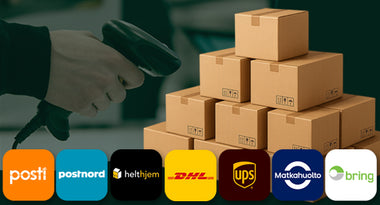When selling internationally, finding the right tariff code for your products becomes a critical task. Tariff codes (also known as HS codes) ensure that customs authorities correctly identify what you’re shipping - impacting duties, taxes, and how quickly your parcels reach customers.
In this guide, we'll walk you through everything you need to know about how to find the right tariff code for your products and make your cross-border shipping process as smooth as possible.
What is a tariff code and why is it important?
Before we dive into how to find the right tariff code, it's important to understand what it is. A tariff code (HS code) is a standardized number that categorizes goods internationally. These codes determine customs duties, taxes, and regulations for shipments entering a country.
Choosing the wrong tariff code can lead to:
- Delays at customs
- Unexpected additional costs
- Fines and penalties
- Customer dissatisfaction
Getting it right is essential for smooth shipping, accurate pricing, and maintaining customer trust.
How to find the right tariff code in 5 steps
Finding the correct code can seem complicated at first, but following these steps will make the process easier:
1. Understand your product in detail
The first step in how to find the right tariff code is fully understanding your product. Focus on the material, function, composition, and intended use. Example: Cotton T-shirts and synthetic fiber shirts fall under different HS codes.
2. Use official tariff code lookup tools
There are excellent online resources that simplify finding the right tariff code:
These tools allow you to search by product name and guide you toward the correct classification.
3. Check with Your Shipping Carrier
Major carriers like DHL, FedEx, and UPS often assist merchants on how to find the right tariff code for their shipments. Many carriers even offer free lookup tools or expert advice as part of their shipping services.
4. Consult customs experts if needed
If you're still unsure how to find the right tariff code for complex products, it's worth consulting customs brokers or trade compliance experts. The small upfront cost can save you significant headaches and penalties down the line.
5. Automate the process where possible
If you save your products tariff codes to Shopify, and use app like Packrooster Shipping it will automatically attach tariff codes to your products when generating customs documents. When shipping orders internationally automatically applying tariff codes to custom documents makes shipping easier than ever.
Helpful tips for finding the right tariff code
- Be specific: Vague descriptions like "clothing" won't cut it — specify materials, purpose, and construction.
- Use product examples: Many tariff search tools offer examples. If your product matches one, that's your code.
- Stay updated: Tariff classifications are periodically updated, so always double-check that you're using the latest version.
- Test and verify: If you're shipping to multiple countries, check each destination's rules — local versions of HS codes may differ slightly.
Understanding how to find the right tariff code is a critical skill for any e-commerce merchant expanding into international markets. It ensures your products move smoothly through customs, keeps costs predictable, and creates a better customer experience.
By following the steps outlined above and using reliable resources, you can confidently classify your products and avoid costly mistakes.
And if you want to make global shipping even easier, Packrooster Shipping can help you automate customs paperwork, shipping labels, and more - so you can focus on growing your store without worrying about the complexities of international logistics.




